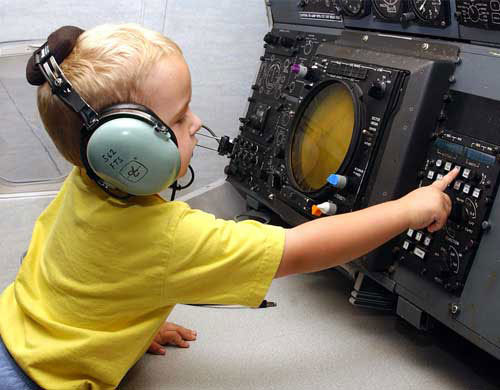Every year about four million kindergartners enter America's schools. They're all excited, eager and confident, because that's the nature of kindergartners, but unfortunately, we adults know better. We know that among those wonderful five year olds, 65% will reach fourth grade reading below the "proficient" level on the National Assessment of Educational Progress (NAEP), and 31% will not even reach the "basic" level. We know which students in which neighborhoods are most likely to have these problems. Since 1980, the story has hardly changed.
Today, I'm writing this blog from an airplane flying from Baltimore to San Francisco. Flying was a risky business long ago, but today the chances are infinitesimal that my airplane will crash.
So here's a question. Why is it ok to leave the reading success of children to chance? Why don't we treat reading success the way we treat air safety, as something to ensure no matter what?
If you think we don't yet know how to ensure the reading success of all children, you might be right, but I can tell you that we absolutely do know how to ensure a much higher level of success than we have now, with today's teachers and today's schools. I was recently reviewing research evaluating reading programs, and I found more than 60 different programs with moderate to strong evidence of effectiveness: one-to-one and one-to-small group tutoring, classroom methods, school-wide reforms, and technology. Over time, it's certain that these approaches, and combinations of them, could become more and more effective, and we could approach 100% success.
Getting to 100% will require more than just better instruction. We are doing a study in high-poverty schools in Baltimore and found that while at least 21% of second and third graders need glasses, only 6% have them. I'm sure there are similar stories relating to hearing, dental, health, and mental health. Absenteeism is another blocker, and there are more. If we want to get to 100%, we have to deal with all of these.
Well sure, you might say, but how could we afford all of this? Fortunately, the most widespread reading problems can be solved inexpensively. The average annual per-pupil cost in the U.S. is about $11,000. The annual cost of our proven Success for All reading program is around $100 additional, or less than 1% of what we are already spending. Two pairs of eyeglasses -- one to take home and one to leave at school -- including the eye exam and glasses replacement, costs less than $50. Proven tutoring models provided by paraprofessionals can cost as little as $400 per student, but even at $2000 for one-to-one tutoring, that's 18% of average per-pupil cost, and for only a minority of the class.
These modest expenditures on proven programs quickly pay back their costs in terms of reducing special education and retention, much less long-term benefits to children and society. Yet none of the 60 proven and promising programs I found is in truly widespread use.
On my airplane, of course, the situation is quite different. Pilots are carefully and extensively trained in proven methods. Technology is constantly developing to provide information and automated assistance to ensure safety and effectiveness. Back-up systems ensure that if things go wrong despite the best of preparation, disaster will not result. All of these systems are constantly evolving in response to development, evaluation, and implementation of innovations.
The reading success of a child is a very serious matter. It simply makes no sense to treat it any less seriously than we treat air safety. Just as on airplanes, we need systems to monitor children's success, not to punish teachers but to know when and how to intervene if trouble arises.
Perhaps someday, we'll put Boeing or Lockheed Martin in charge of our schools, and charge them with getting us as close as possible to 100% success in reading. I can see it now.
Proven approaches to:
Phonemic awareness? Check
Phonics? Check
Vocabulary? Check
Fluency? Check
Comprehension? Check
Vision? Check
Hearing? Check
Tutoring backup? Check
Ready for takeoff!
Of course we can solve this problem. All we have to do is to decide it must be solved and then do it. It is neither efficient nor ethical to keep accepting the number of reading disasters we experience in our schools.


You need to be a member of School Leadership 2.0 to add comments!
Join School Leadership 2.0